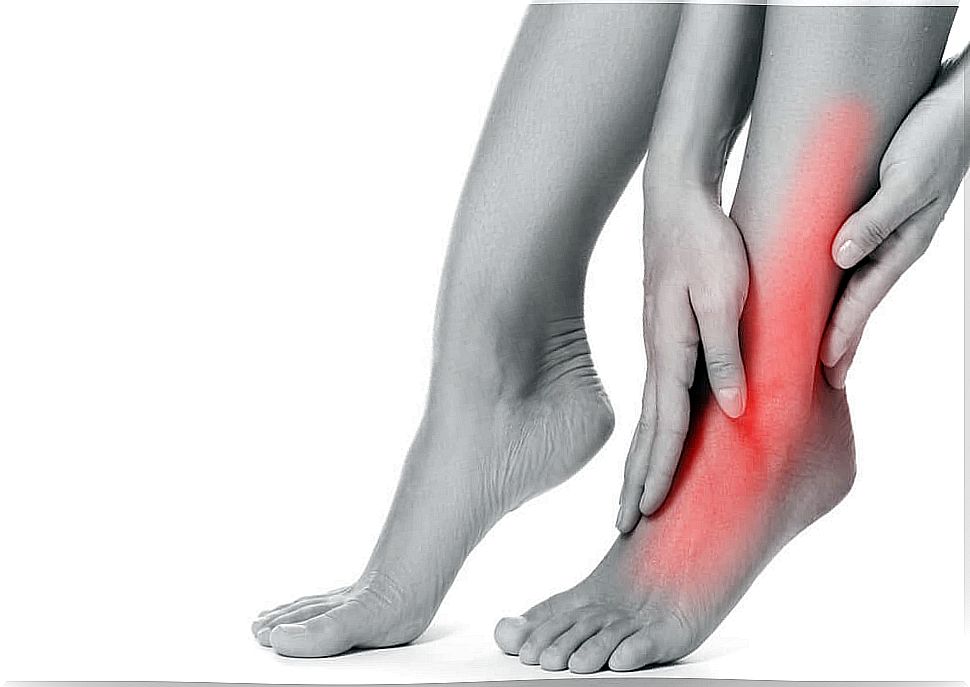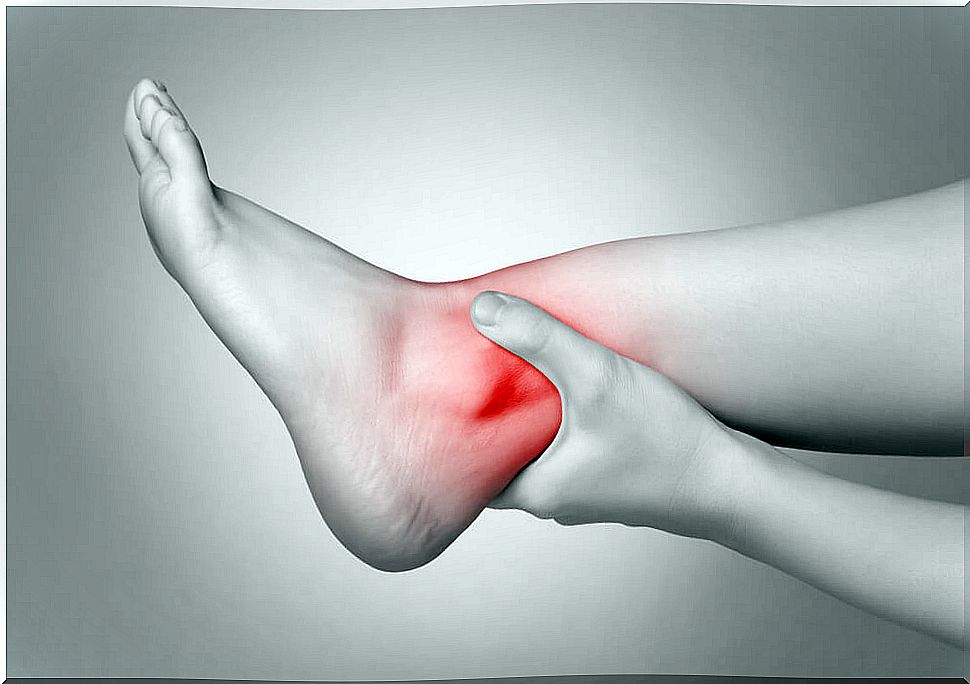What Is An Ankle Dislocation Like?
Ankle dislocation is a rare injury. It is usually caused by a violent accident or previous diseases that weaken the bones. Either way, you need to follow some tips to avoid more serious damage.

Ankle dislocation is a rare injury. In general, when it happens, it is due to a very severe accident, almost always in traffic or during the practice of some sport. Basically, it means that some of the bones were displaced by excessive force on the ligament that joins them.
In a dislocation, there is a permanent division of the two parts that make up a joint. In this way, a separation occurs at the ends of such bones, which are the parts that are connected. In the case of ankle dislocation, there is separation between the tibia and the talus. Do you want to know how it is produced? Coming up next, we tell you.
Types of ankle dislocation

In general, ankle dislocation causes much more pain than the fracture itself. It is so strong that it is not unusual for the patient to lose consciousness. Therefore, it is a condition that requires urgent medical and hospital care.
There are several ways to classify ankle dislocation. They can be categorized according to the cause that produces them, the way in which the injury is configured and the time of evolution. Let’s look at each of these classifications.
Depending on the cause, ankle dislocation is divided into:
- Direct and indirect trauma. It is the case in which an ankle dislocation is caused by a severe sports or traffic accident.
- Muscle traction. When it is the result of a violent, abrupt or inappropriate movement.
- Recurrent. If there is a previous unhealed dislocation and the ligament tear persists, new dislocations are common.
- Spontaneous. When there is bone or joint weakness, due to previous diseases, such as osteoporosis or other similar ones.
- Congenital. Those that occur during the fetal stage or from birth.
On the other hand, the way an ankle dislocation is configured refers to the way in which the injury is presented. This can be:
- Complete. When there is total loss of articular cartilage and the components of the joint are totally separated.
- Open. If, in addition to the ankle dislocation, there is also a skin wound.
- Closed. When there are no breaks in the skin.
According to the time of evolution, the trauma can be classified into:
- Sharp At the immediate moment of having occurred.
- Recent. When they have less than 3 weeks of evolution.
- Ancient. In all other cases.
Symptoms and diagnosis of ankle dislocation
The main clinical manifestation is pain, since it is extremely intense. Also, there is a tearing sensation, which is perceived as deep and tiring. It is usual that it begins to decrease little by little, but it is activated when you try to move the ankle. This produces a very strong spasm that can lead to loss of consciousness.
In addition to this, a publication from the University of Rochester Medical Center points out that in an injury like this, symptoms such as:
- Swelling and bruising
- Inability to put weight on the foot.
- Problems moving the ankle.
- Deformities in the area.
Regarding the diagnosis, the doctor will begin to explore the injured area. Then, you will gently palpate to determine which are the points of greatest pain and to determine if there is displacement of fragments.
In addition, you will try to move your foot in different directions to get an idea of the nature of the dislocation. Most often, he will order X-rays and, if necessary, a CT scan. In this way, it will be possible to establish what the type of injury is.
Complications and prevention

Ankle dislocation, like any other injury, can also lead to various complications. The most frequent are the tearing of the muscles, tendons and / or ligaments that support the joint. Also, there may be nerve damage in adjacent blood vessels.
In some cases joint stiffness occurs. Also, it is possible that arthritis develops over the years and that the person is susceptible to having new dislocations in the same ankle, or even fractures. The University of California states that the main preventive measures to avoid injury are the following:
- Warm up before doing any sporting activity.
- Perform frequent exercises, in order to increase the resistance of the ligaments and increase the flexibility of the joints.
- Do physical activity that strengthens the ankles.
- Wear protective gear when carrying out activities that expose the ankles to injury.
- Wear comfortable and suitable footwear for each activity.
- Replace athletic shoes when they are already worn out.
- If a previous injury has already been experienced, it is best to wear protective bands to prevent future injuries.
- Prevent falls, avoiding stepping on slippery or unstable floors.
Finally, it is essential to learn to listen to your body. If you experience pain in your feet or ankle, it is best to stop or modify the activity until the discomfort subsides. In addition, if you have had a previous injury, you must go through a period of rehabilitation before returning to the routine. This will prevent recurring injuries.









